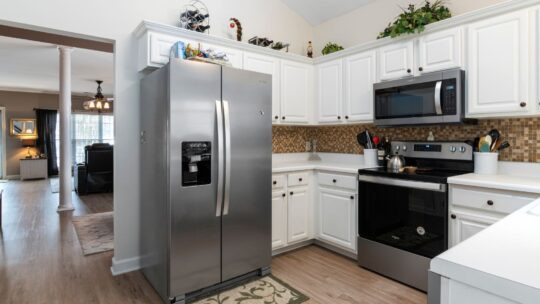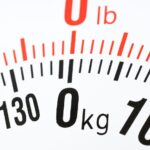
Engaging Introduction
Energy efficiency has emerged as a crucial aspect of modern household management, with families across the country looking for practical ways to trim utility bills while minimizing their environmental impact. The typical home houses dozens of appliances that work around the clock, quietly drawing electricity and adding to monthly costs. Many everyday devices, including hair dryers, consume far more energy than most homeowners realize. By understanding how these appliances function and making thoughtful adjustments to daily routines, you can achieve substantial reductions in both energy expenses and your household’s carbon footprint.
Understanding Household Energy Consumption
Household energy consumption encompasses all the electricity used by appliances and systems throughout your home during any given period. This measurement carries weight for two primary reasons: rising energy costs strain household budgets, while growing environmental awareness pushes us toward more mindful consumption habits.
The heaviest energy users in most homes are predictable—heating and cooling systems, water heaters, and major appliances like refrigerators and washing machines dominate consumption. Yet smaller appliances, working together throughout the day, contribute a surprisingly large share of your total usage. Grasping the concepts of wattage and kilowatt-hours (kWh) becomes essential for smart appliance decisions. Wattage tells you how much power an appliance demands while running, whereas kWh measures actual energy consumption over time—the figure that determines your monthly bill.
How Small Appliances Impact Your Energy Bill
Small appliances might seem insignificant individually, but their collective impact throughout the day can substantially affect your monthly energy costs. The cumulative effect of multiple devices adds up faster than most people expect.
| Appliance | Average Wattage | Estimated Annual kWh | Annual Cost* |
| Hair Dryers | 800-1800W | 25-60 kWh | $3-8 |
| Coffee Makers | 900-1200W | 45-75 kWh | $6-10 |
| Toasters | 800-1500W | 15-30 kWh | $2-4 |
| Electric Kettles | 1500-3000W | 20-40 kWh | $3-5 |
*Based on average residential electricity rates
Your personal usage habits dramatically shape these figures. How often you use an appliance, how long it runs, and which settings you choose all influence actual energy consumption. Surprisingly, a device used daily for brief periods might consume more energy annually than a high-wattage appliance used only occasionally.
Case Study: Optimizing Hair Care Routines for Energy Savings
Take your typical morning routine: a hot shower, hair drying, and final preparations before heading out. This everyday scenario offers several opportunities to optimize energy use without compromising comfort or convenience.
Hair dryers perfectly illustrate how appliance settings directly impact energy consumption. Most models provide various heat and speed combinations, with the highest heat and maximum speed settings drawing the most electricity. Choosing lower settings when they’ll do the job can slash energy use by 30-50% while still delivering satisfactory results.

Smart strategies for energy-efficient hair care include:
– Letting hair air-dry partially before reaching for the dryer cuts down total drying time
– Matching heat settings to your specific hair type and styling requirements
– Investing in ionic or ceramic technology models that work more efficiently
– Prioritizing energy-efficient models when it’s time to replace older appliances
Choosing Energy-Efficient Appliances: What to Look For
When shopping for new appliances, certain features signal superior energy efficiency. ENERGY STAR certification offers dependable guidance for major appliances, while wattage ratings help you evaluate smaller devices.
The relationship between low, medium, and high wattage can be more complex than it appears. Higher wattage doesn’t automatically mean poor efficiency—sometimes it translates to faster task completion, potentially using less total energy. Hair dryers demonstrate this principle well: an 1800W model might dry your hair in half the time of a 900W unit, possibly consuming similar amounts of total energy.
Before purchasing any new appliance, ask yourself these critical questions:
– What’s the wattage range, and can I adjust it?
– Does it offer multiple heat and speed settings?
– Are energy-saving technologies built in?
– How does its energy consumption stack up against similar models?
Practical Tips for Reducing Energy Use at Home
Developing energy-conscious habits requires minimal effort but delivers substantial rewards. Unplugging devices when they’re not in use eliminates phantom loads that can account for 5-10% of your home’s energy consumption. In areas with time-of-use pricing, running appliances during off-peak hours when electricity rates drop can meaningfully reduce costs.
Regular maintenance keeps appliances running at peak efficiency. Clean filters, adequate ventilation, and prompt repairs prevent your devices from working harder than necessary to achieve the same results.
Key Takeaway Box:
– Use lower heat and speed settings whenever possible
– Unplug appliances when not in use
– Stay on top of regular maintenance
– Factor energy efficiency into replacement decisions
– Track usage patterns and adjust habits accordingly
Building Sustainable Habits for the Future
Mastering energy use in daily routines represents a foundational step toward both financial savings and environmental stewardship. Smart choices about appliance selection and usage patterns create lasting benefits that ripple beyond individual households.
Small adjustments to daily habits can snowball into significant improvements over time. By taking an honest look at your personal energy consumption patterns and implementing focused changes, you can achieve meaningful reductions in both costs and environmental impact—all while maintaining the lifestyle and comfort levels you value.


















